Trees with white bark are a beautiful addition to the garden at any time of year, however, it is in winter when they truly come alive. Set against the barren garden, the white bark becomes almost translucent, radiating a glow that will brighten every plot.
Standing in stark contrast to the greens and browns that define the garden’s color palette, trees with white bark particularly pop when paired with plants with red and orange leaves and stems. So, whether you plant one statement tree or incorporate several into your backyard ideas, you will fall in love with the interesting colors and textures that they bring.
Different Types of Trees with White Bark
River Birch
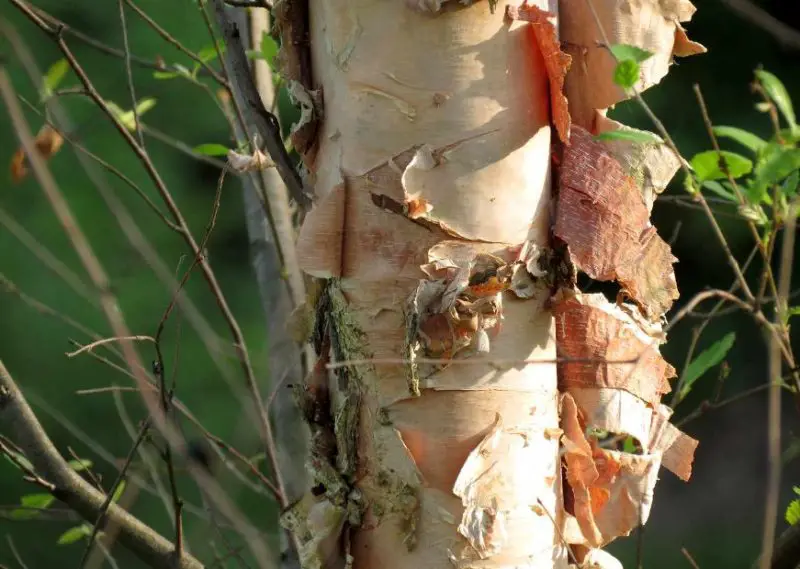
Native to the Southeast of the United States, river birch—also called red birch, black birch, or water birch—often grows in thickets along rivers, lakeshores, floodplains, sandbars, and stream islands. Without trimming, it usually develops to a height of 50 to 90 feet with several trunks.
The large canopy produced by the double-toothed, diamond-shaped leaves turns yellow in the fall. Mature bark is either pink, reddish-brown, or black when it peels off from the younger, silvery gray bark. River birch yields little brown or green cones in the summer and blossoms in the spring and winter.
Himalayan Birch
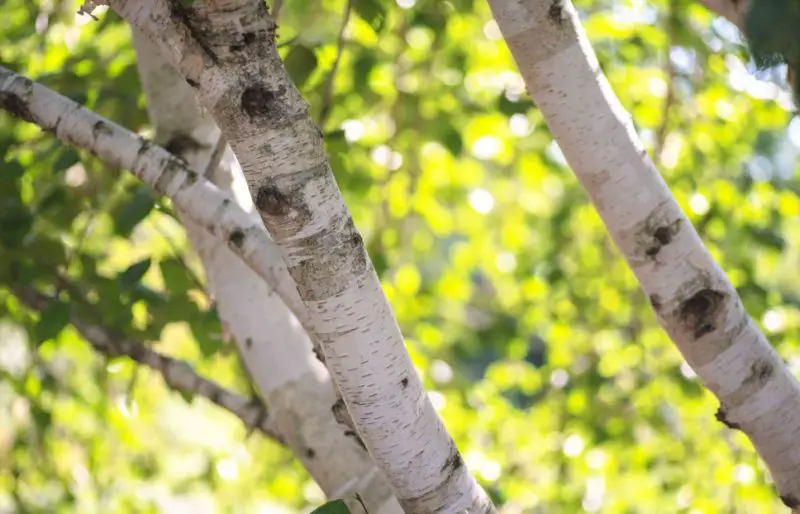
The Himalayan Birch tree has open, upward-facing branches that form a pyramid. It yields greenish female blooms that form tiny erect catkins in the spring, and yellowish-brown male flowers that hang down to the ground in 3-5 inch catkins. Early fall brings with it drooping fruits filled with tiny, flying seeds. The leaves are ovate, slightly rounded wedges that are two to three inches broad.
The bark of Himalayan birches is remarkably smooth and brilliant white, making it easy to identify. As it expands, the old bark peels off the trunk, exposing fresh bark and giving it attractive stripes. It looks great in groups of three or as a multi-stemmed specimen thanks to its colorful trunks, which also add superb winter interest.
Paper Birch
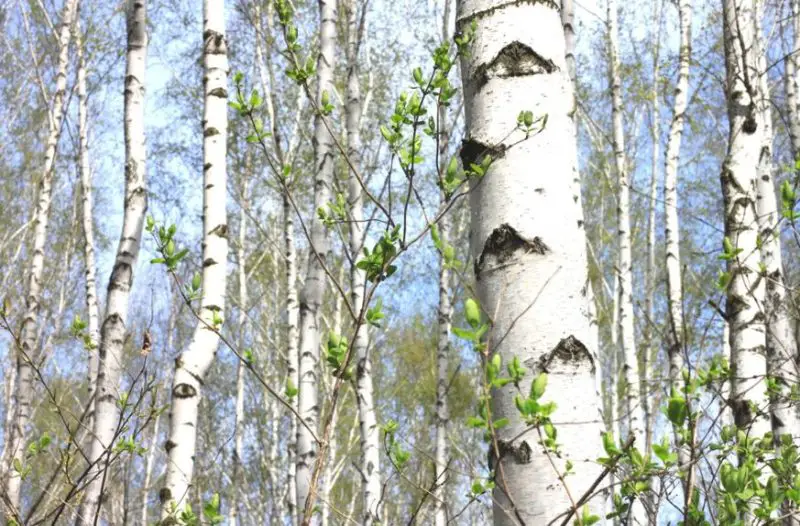
Paper birch trees grow quickly and have a short lifespan; as they mature, they frequently acquire many trunks. Its peeling white bark, which contrasts dramatically with its green foliage that become bright yellow in the fall, is what makes it so unique. This bark looks great mixed up with the winter’s snowy surroundings.
Paper birch requires extremely moist soil and lots of sunlight to flourish in colder climates such as northern California. When planting, it helps to keep the soil around its shallow root system moist by using mulch. This deciduous tree adds a stunning element to landscapes with its unique appearance and seasonal color changes.
Japanese White Birch
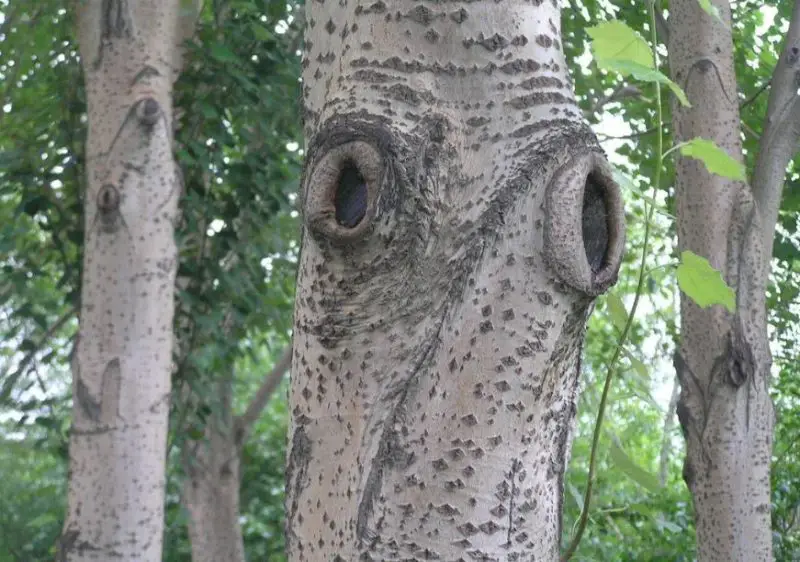
The Japanese white birch, often called Asian white birch, is a medium-sized to large tree with a rounded or columnar appearance that normally reaches 30 to 40 feet at maturity. The simple, oval leaves are oriented alternately, with serrated margins, and have no discernible autumn color. They are yellowish-green in color.
This tree’s stunning white bark makes it stand out strikingly. It grows best in medium to wet, well-drained loamy, sandy, or clay soils and likes full sun to partial shade. Due to its weak drought tolerance, Japanese white birch thrives best in chilly regions with regularly moist soil.
Snakebark Maples
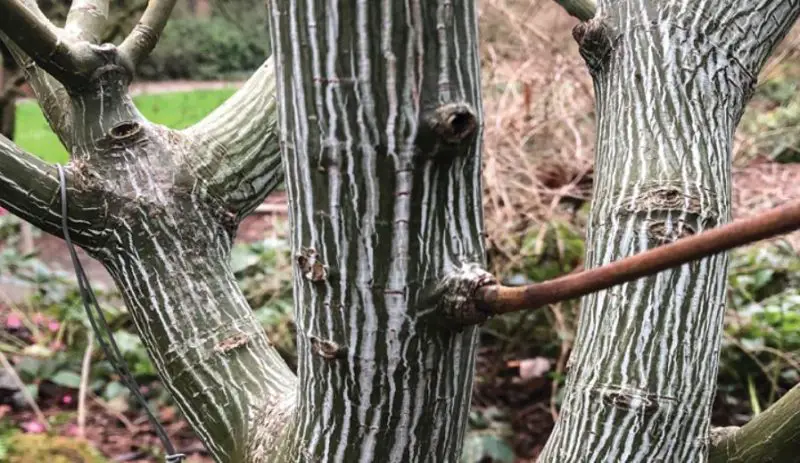
Snakebark maples are multitrunked, upright trees with branches that arch. Their olive green, smooth bark has white and green streaks. The dark green, oval, unlobed leaves have doubly serrated margins and grow in the opposite direction. Tiny, yellowish flowers with a 3 to 4-inch pendant raceme bloom in the spring.
Snakebark maples are open-plane, deciduous trees with an attractive oval shape. Although their average texture fades into the landscape, it can be enhanced for a balanced composition by planting trees or shrubs that are coarser or finer.
Whitebark Pine
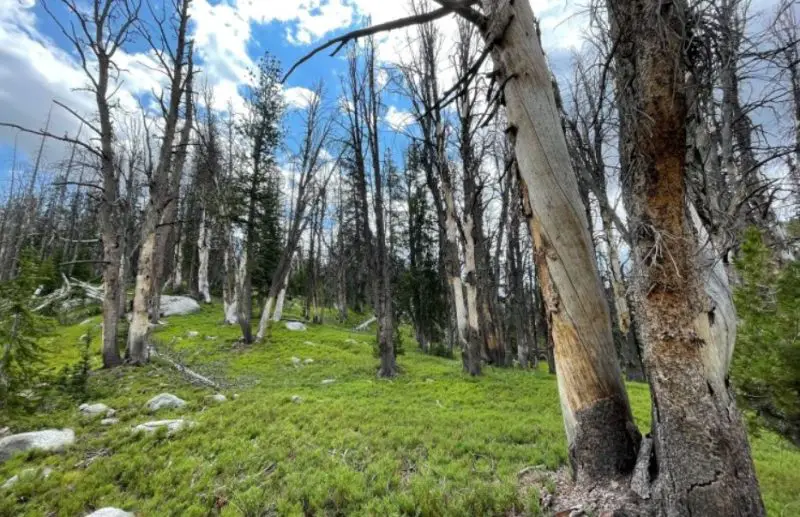
Subalpine pine, or whitebark pine, takes on a variety of forms, especially in windy circumstances. It might be a tiny tree with a spreading trunk and large crown or a shrub with twisted branches. Its cones resemble limber pine, however they are not the same. It grows well in dry to slightly wet subalpine regions and has stiff, bluish-green needles in five-centimeter clusters that are frequently clumped at branch ends.
With time, the thin, smooth, chalky-white bark of the tree transforms into thicker, brown, scaly plates. This hardy tree is essential to subalpine habitats because it gives a variety of wildlife species food and habitat.
White Satin Birch
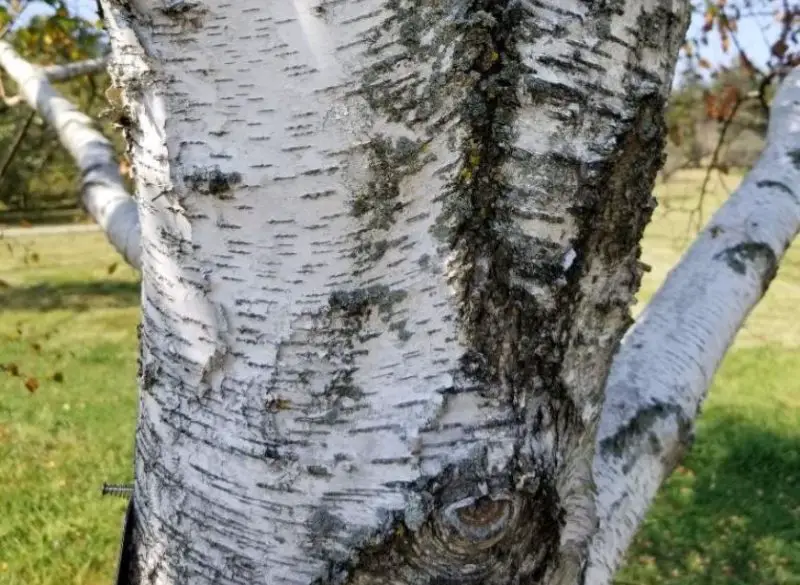
The gorgeous white bark of the white satin birch tree, which peels from old trunks in shades of tan and pink, is much sought after. Its pointed leaves are bright yellow in the fall, adding to its allure. Its dark green foliage lasts the entire season. Its peeling white bark adds great winter appeal, helping it stand out in the environment even though its fruit and blooms are not ornamental.
At maturity, it reaches a height of approximately 35 feet and a width of 20 feet. Its growth pace is rapid, and its canopy is low. White satin birch can flourish for up to 70 years under the right circumstances, adding timeless elegance to any environment.
Erman’s Birch
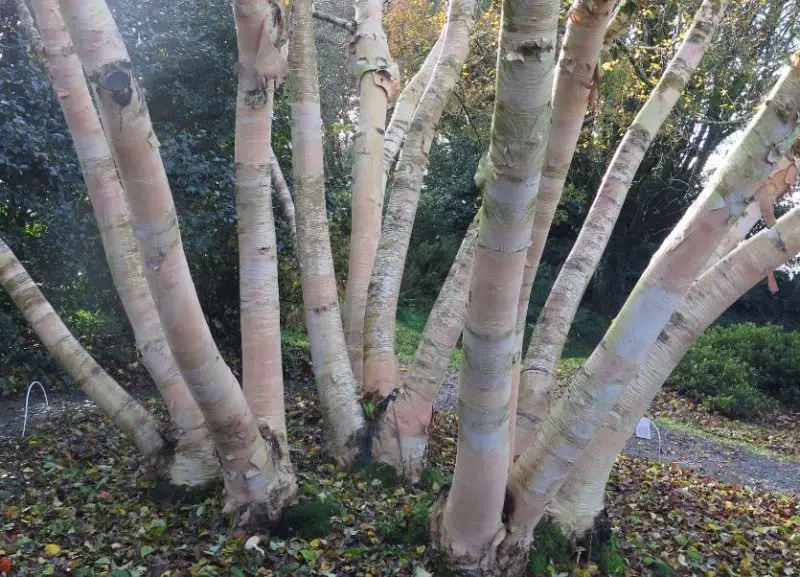
Erman’s Birch, known for its graceful demeanor, boasts creamy-white and pinkish bark that steals the spotlight, especially in winter against dark evergreens. Its summer foliage is a vibrant green, often heart-shaped, with prominent veining that transitions to golden autumn hues.
With its robust bark providing year-round visual interest and its leaves delivering seasonal variation, this tree gracefully enhances any landscape. Erman’s Birch, with its remarkable appearance and versatile character, is a delightful addition that captivates onlookers with its distinct beauty throughout the year.
Palo Blanco
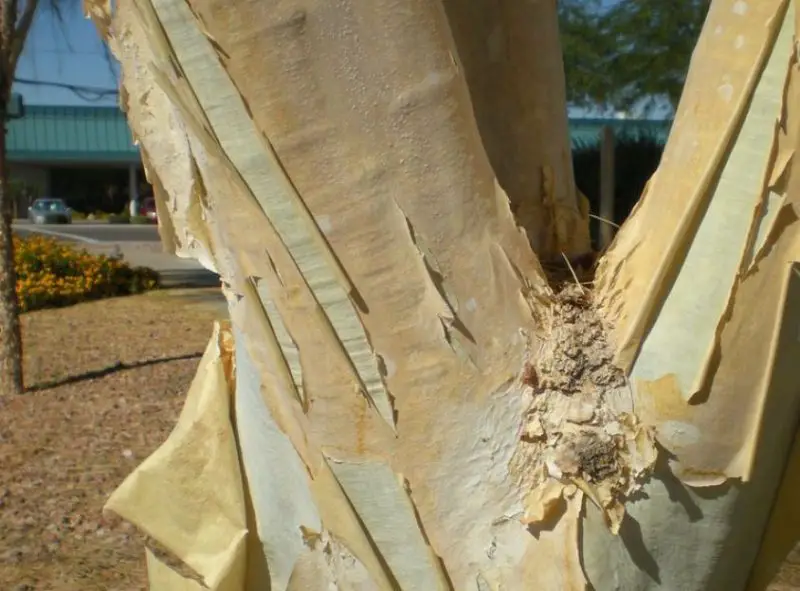
Palo blanco, often known as the “white stick,” is a small to medium-sized deciduous tree that grows to a height of 15 to 25 feet and a width of 10 to 15 feet. It has an upright habit with open branching. The tree is covered in spikes of creamy-white flowers that bloom in late spring and occasionally all year long. These are followed by flattened seed pods that can grow to be 4–6 inches long.
Its foliage consists of small, pinnately complex leaves on long, weeping phyllodes. These phyllodes, which are more than a foot long, turn orange in the fall and then shed their leaves until new growth appears in the spring. The palo blanco’s visually appealing white trunk sticks out nicely, especially when planted close to colorful walls.
Sycamore

With their expansive canopies, big lobed deciduous leaves, and white bark that peels off to reveal darker spots, sycamores are typically large, magnificent trees. Sycamores have symmetrical, spreading foliage that reaches 50–70 feet in breadth and 75–90 feet in height. Typically, the main trunk of the tree breaks into two or four huge branches.
Sycamores grow into enormous, gorgeous trees that offer good shade because they adapt well to any type of soil. This deciduous tree bears seedpods in clusters of three or more and sheds its leaves in the winter. American sycamores are often used for streets, parks, reclamation projects, and residential landscaping because of their quick growth, adaptability to a variety of environments, and longevity.
White Poplar
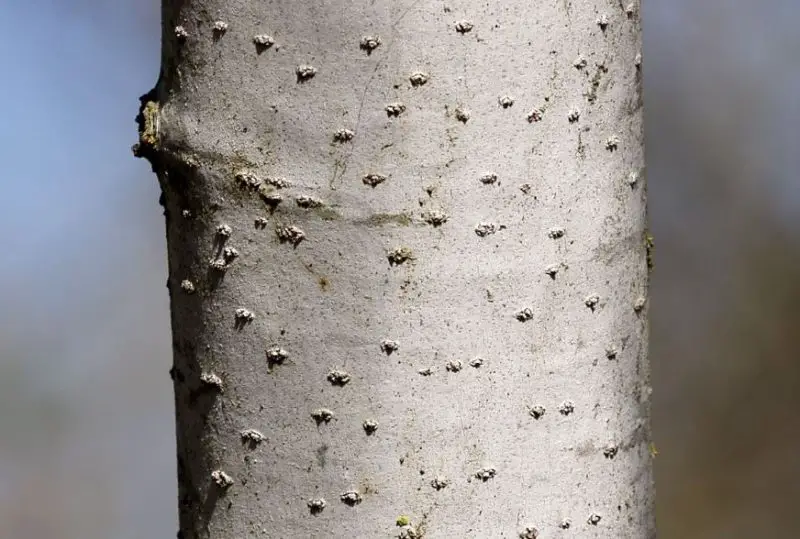
The white poplar is a rapidly growing, deciduous tree that spreads to a height of around 50 feet and offers deep shade up to 100 feet in diameter. Its dark green leaves have whitish, fluffy undersides that shimmer in the wind. It bears small, insignificant yellow flowers in the spring, which are followed by tiny seedpods that hold a large number of seeds.
White and smooth at first, the bark eventually becomes ridged and rough. The single, upright trunk of white poplars is adorned with several smaller branches. They do well in dry environments and grow best in direct sunlight. Planting this wood close to structures is not recommended because it is brittle and can shatter in strong winds.
Trembling Aspen
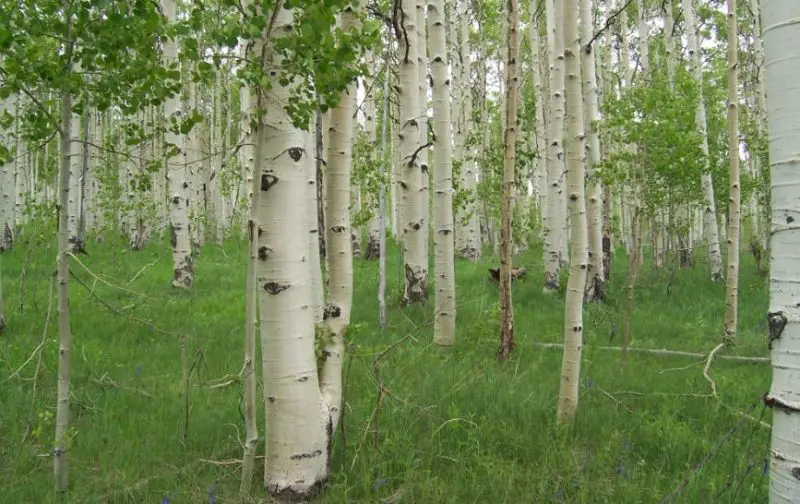
In the right circumstances, trembling aspen trees can grow up to 65 feet tall. As they become older, their creamy white bark with dark brown or light gray markings becomes ridged and darker. Tiny blooms produce silvery catkins in the spring before the leaves open. The oval to round leaves have light green tips that turn brilliant gold in the fall.
Greenish-white, less than half-an-inch-long fruit capsules appear in the summer. Trembling aspens are frequently planted in bunches to intensify the vibrant fall colors and quickly provide the impression of being in a forest. They work well to filter off unwanted summer vistas and city noise.
Ghost gum
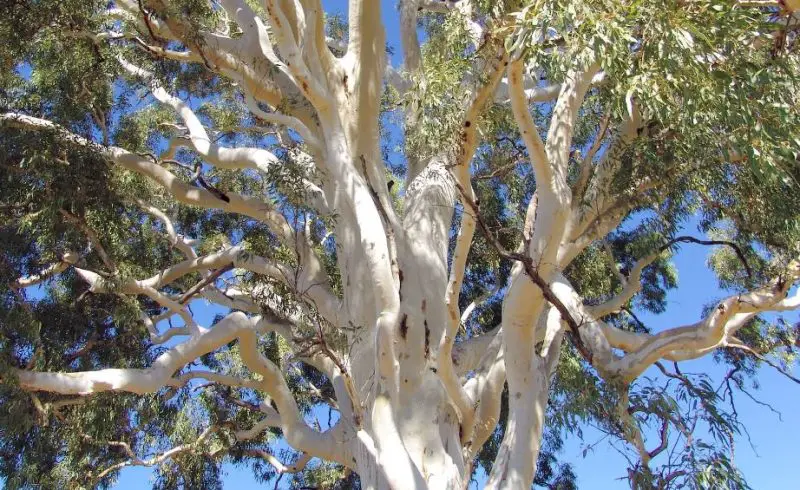
Ghost gum trees are tall, thin trees with slightly pendulous branches and a rounded top. Their silvery or grayish-green spear-shaped leaves hang like garlands. When there is frost, the foliage gets a subtle purple tint. Ghost gums yield large clusters of little white blossoms in the summer, which transform into woody, bell-shaped nuts that have decorative value.
Their most characteristic feature is their ghostly white bark. They often grow to a height of 40 to 60 feet, with slender foliage that reaches up to 25 feet in width. The branch structure is open and stretched out beneath the smooth, whitish bark. Ghost gums grow best in sunny or slightly shaded spots with soil that drains quickly.
Brazilian Ironwood
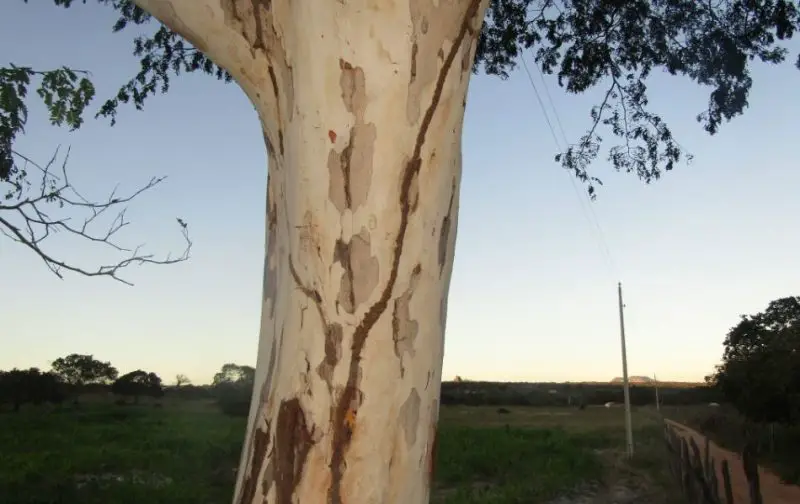
The Brazilian Ironwood is a remarkable tree that may grow up to 20 feet tall, with a flat crown and a fluted base. It comes from tropical America, specifically Brazil and Bolivia, and is popular in Singapore because of its decorative attributes. Usually an understory tree, it grows to a height of 20 to 30 feet and a width of the same. It does well in sunny environments.
It can be planted next to lakes and streams because it is tolerant of many different kinds of weather, such as flooding and moist soils. The trunk is smooth and light buff-white at first, but as it ages, it becomes grey or brownish and sheds in sharp pieces that look like the hide of a leopard.
White Alders

Beautiful white alders grow quickly and are best suited for sunny, damp locations. Even their broken leaves release a delightful smell. Their dense foliage gives nice shade. Usually growing to a height of 15–25 meters, these medium-sized deciduous trees can occasionally reach a height of 35 meters.
Their bark is smooth while young and scaly as they get older. It is either white or pale gray in color. Flowering white alders produce blooms in the form of pendulous male catkins that are yellowish in color and measure 3 to 10 centimeters in length. The tree produces a lot of pollen during the early spring pollination period, which happens before the leaves appear.
Silver Burch
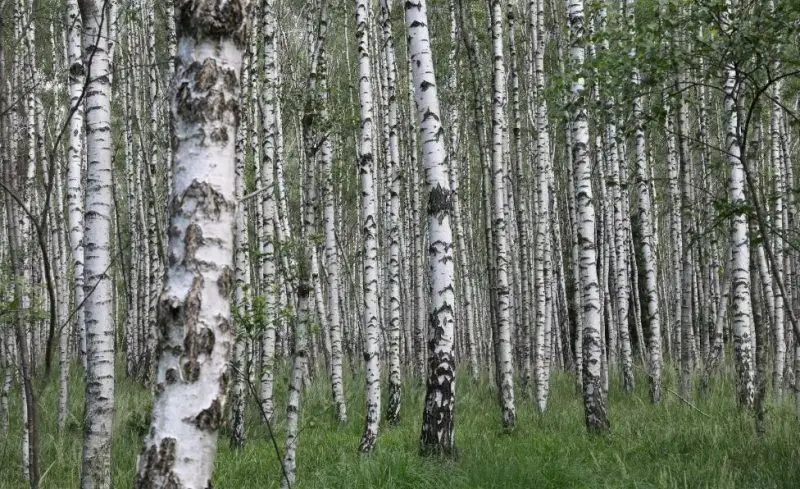
Silver Birch, also known as European Birch, hails from Europe but is cultivated for its ornamental beauty across the United States. Its distinctive feature is its shiny white bark, which develops as the tree matures. This striking characteristic adds visual interest to landscapes, making it a popular choice for gardens and parks.
With its elegant form and shimmering bark, the Silver Birch stands out as a charming addition to any environment, offering a touch of natural beauty reminiscent of its European origins.
Quaking Aspen
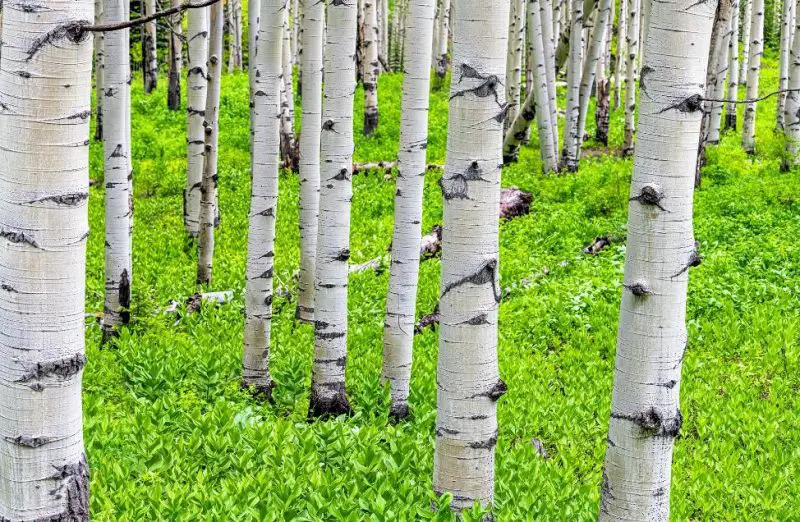
Quaking Aspen, also known as American Aspen, is prominent in Canada, New England, and the Rocky Mountains. Its slender trunk and distinctive white bark create a striking contrast against the dark undergrowth. With a typical height of around 50 feet, it’s well-suited for landscaping, adding vertical interest without overpowering smaller spaces.
This tree’s delicate leaves shimmer in the slightest breeze, earning it the name “quaking” as they tremble and rustle. Popular for its graceful appearance and adaptability to various climates, the Quaking Aspen remains a beloved symbol of North American landscapes, offering both beauty and charm to any setting.
Spinning Gum
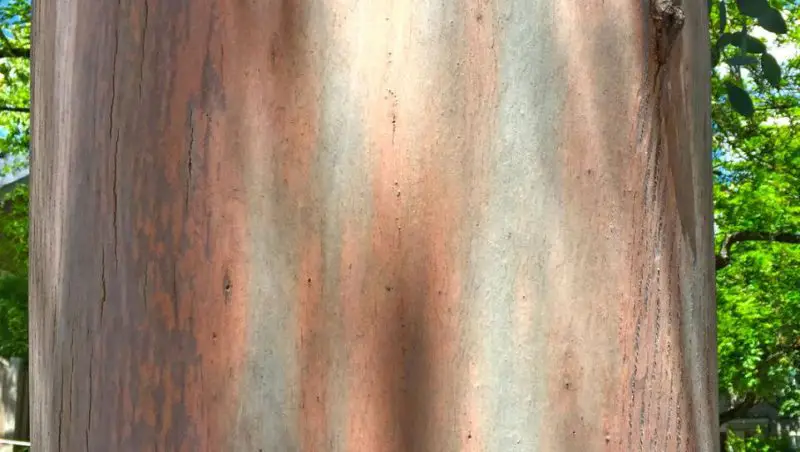
Spinning Gum, scientifically known as Eucalyptus mannifera, is indigenous to Victoria, New South Wales, Tasmania, and Australia. Thriving in sub-alpine regions, it’s ideal for areas experiencing snowfall most of the year. This tree flourishes in full sunlight and moderately fertile, slightly acidic soil that retains moisture. Its bark is small and adorned with off-white flaking ribbons, adding to its distinctive appearance.
With its adaptability to harsh climates and striking foliage, the Spinning Gum serves as a resilient and visually appealing addition to landscapes, offering both beauty and practicality in regions with challenging weather conditions.
Tasmanian Snow gum
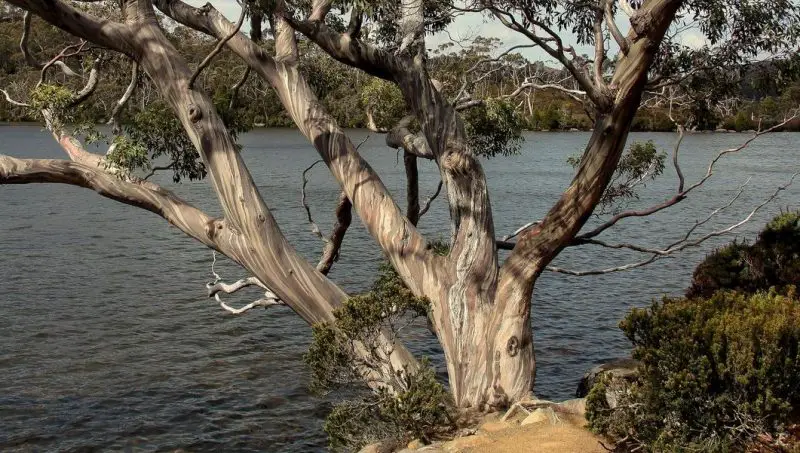
The Tasmanian Snow Gum, scientifically known as Eucalyptus coccifera, is native to Tasmania, reaching heights of 30 to 50 feet and proliferating readily. Its bark boasts a smooth, multi-colored appearance, often resembling marble, with creamy-white as the base color interspersed with strips of gray, pink, and blue.
Thriving in full sun and well-draining, fertile, acidic, or neutral soil, this tree features heart-shaped foliage with a refreshing peppermint fragrance. With its striking bark and charming foliage, the Tasmanian Snow Gum makes a bold statement in any yard, adding visual interest and aromatic allure to outdoor spaces.
Plane Tree

The Plane Tree, also called the London Plane, features pale grey-green bark and thick, stiff-textured leaves resembling those of maple trees. Renowned for its ability to filter small particle pollutants in urban environments, it’s a common sight in bustling cities like New York City, Sydney, and Johannesburg.
Providing ample shade, it’s prized for its resilience against breakage and pollution, thriving amidst urban challenges. With its distinctive bark and robust nature, the Plane Tree stands as a testament to nature’s adaptability, offering both aesthetic appeal and practical benefits in urban landscapes around the world.
Bald Cypress
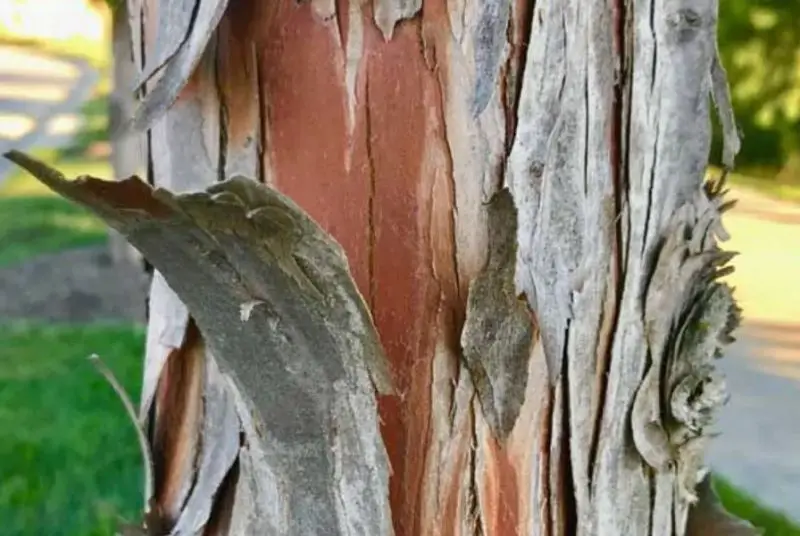
The Bald Cypress, scientifically known as Taxodium distichum, is indigenous to the southeastern United States, spanning from New Jersey down the coast to Florida, then westward to Texas and Oklahoma along the Mississippi River. Remarkably adaptable, it thrives in various soil types, from wet and salty to dry and swampy conditions.
Renowned for its striking display of red needles in the fall, the Bald Cypress adds vibrant hues to landscapes during the autumn season. With its resilience and stunning foliage, it remains a cherished emblem of the diverse and dynamic ecosystems found in the southeastern United States.






